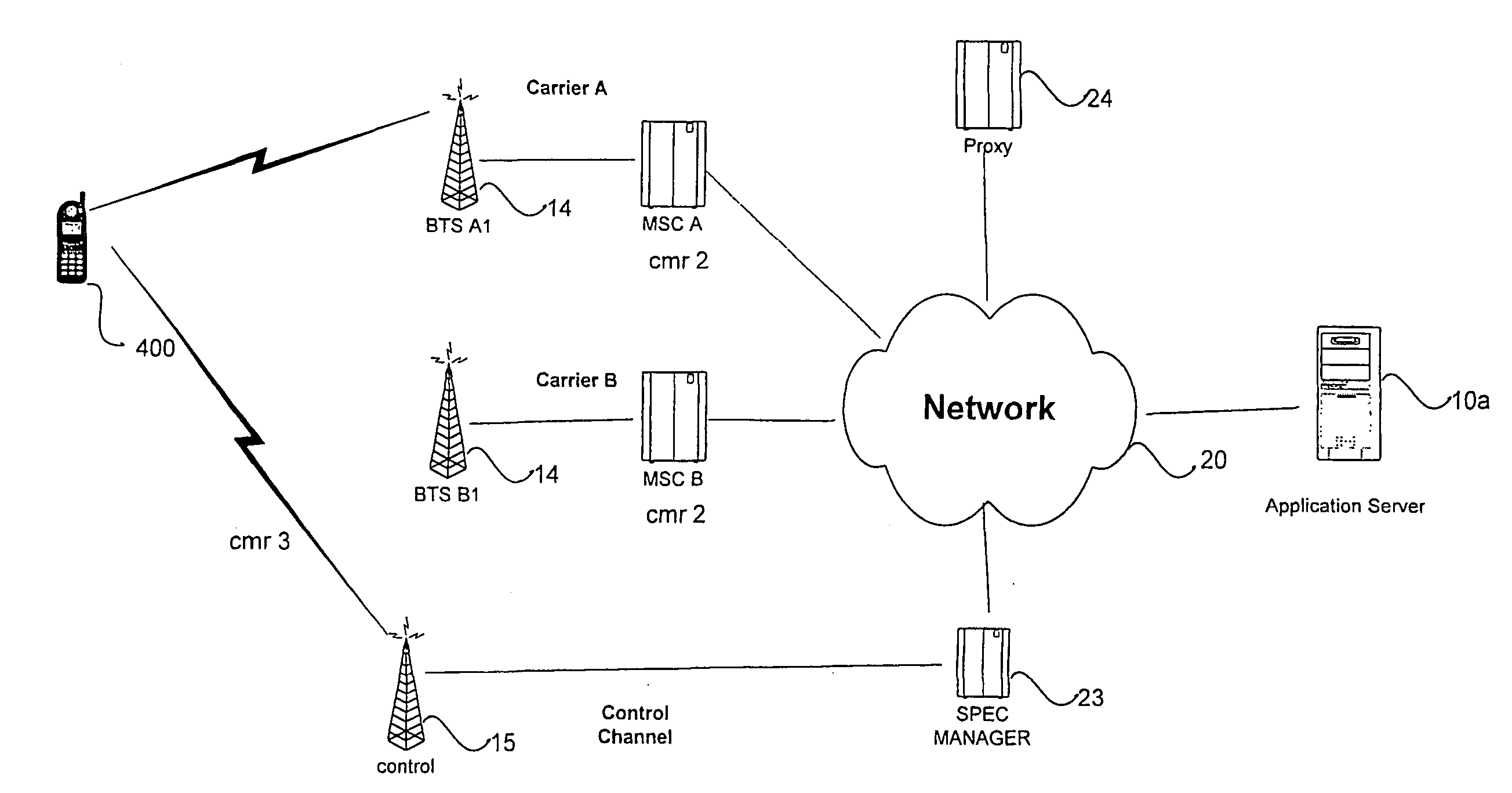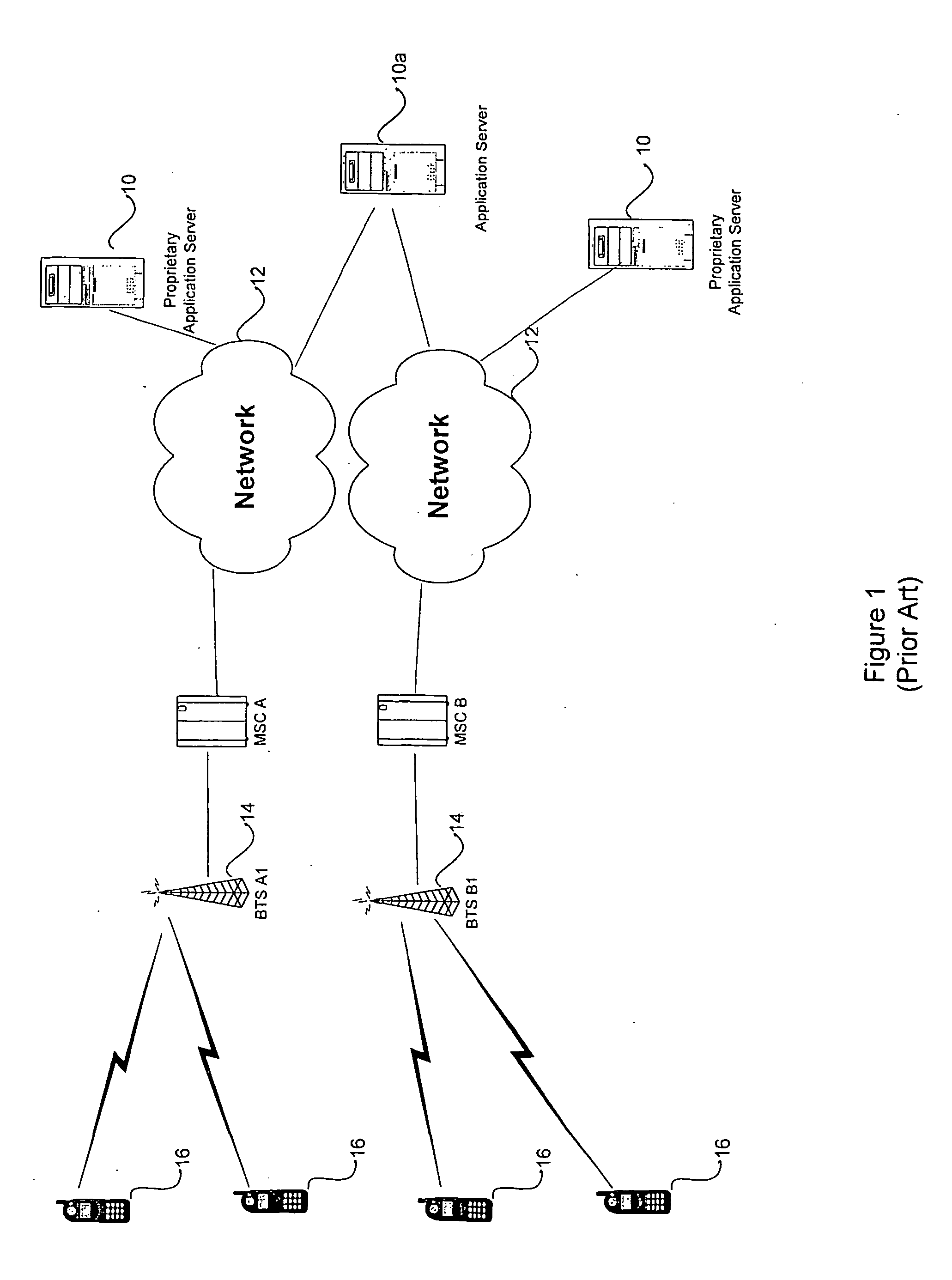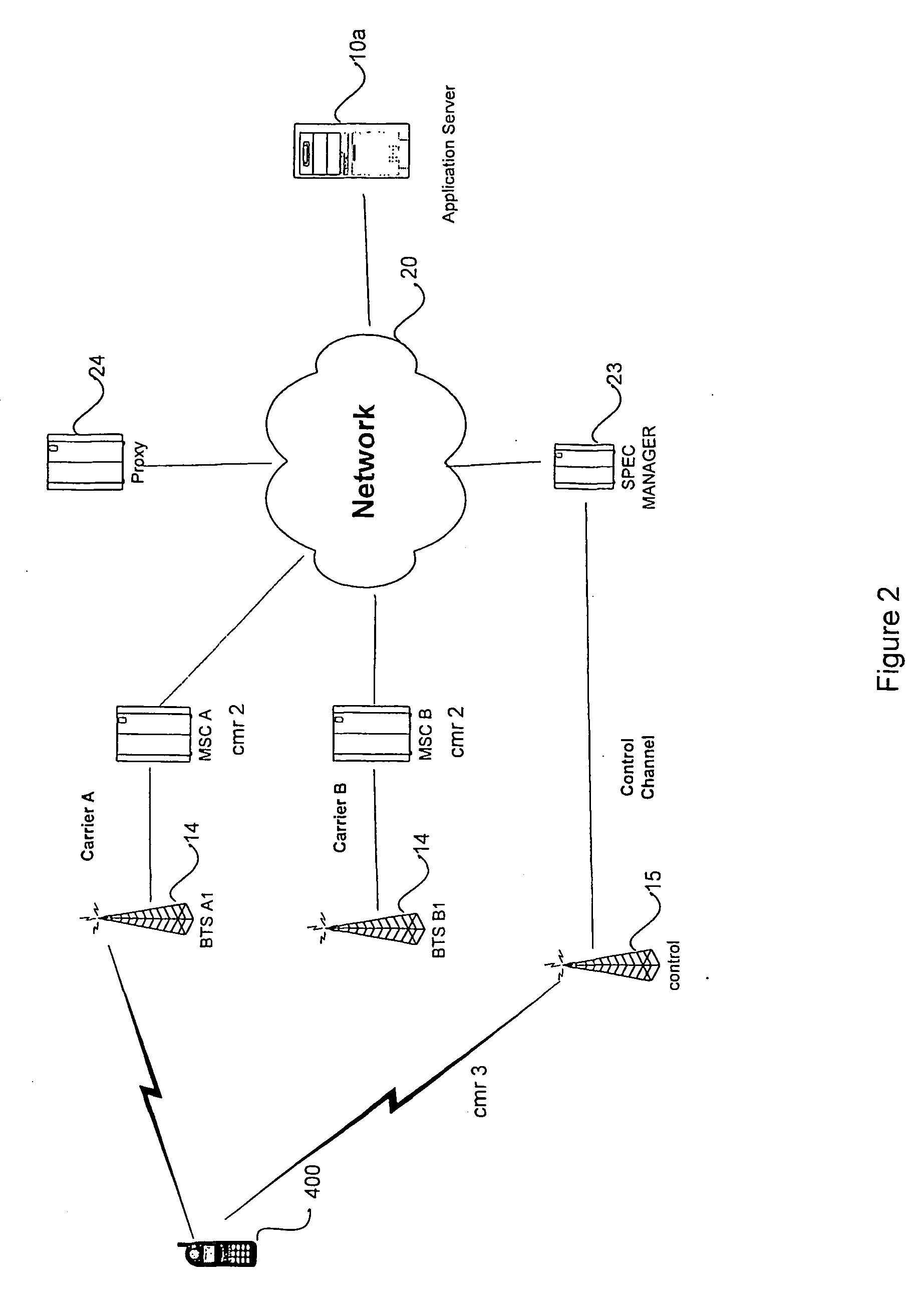Method and system for dynamic spectrum allocation and management
a spectrum allocation and dynamic technology, applied in the field of telecommunications, can solve the problems of high cost of spectrum licenses, and high demand for wireless services, and achieve the effect of maximizing the allocation of devices and facilitating authentication and billing
- Summary
- Abstract
- Description
- Claims
- Application Information
AI Technical Summary
Benefits of technology
Problems solved by technology
Method used
Image
Examples
Embodiment Construction
[0040]Referring now to FIG. 2, there is shown a schematic diagram of a wireless network 20 having an intelligent spectrum management server 23 in accordance with the present invention. In this embodiment, network 20 is comprised of separate networks from multiple network carriers, connected to at least one proxy server 24 and at least one spectrum management server 23. Spectrum management server 23 can efficiently manage the available spectrum as well as deploy and expand the application server 10, 10a offerings. The spectrum management is achieved primarily through receiving information about available capacity from the network carrier's MSCs, and making intelligent allocation decisions by combining intelligence in the spectrum management server 23 with intelligence in the wireless device 400. Communication between the spectrum management server 23 and the wireless device 400 is transmitted along a control channel maintained by a control base station 15. The control channel may be ...
PUM
 Login to View More
Login to View More Abstract
Description
Claims
Application Information
 Login to View More
Login to View More - R&D
- Intellectual Property
- Life Sciences
- Materials
- Tech Scout
- Unparalleled Data Quality
- Higher Quality Content
- 60% Fewer Hallucinations
Browse by: Latest US Patents, China's latest patents, Technical Efficacy Thesaurus, Application Domain, Technology Topic, Popular Technical Reports.
© 2025 PatSnap. All rights reserved.Legal|Privacy policy|Modern Slavery Act Transparency Statement|Sitemap|About US| Contact US: help@patsnap.com



